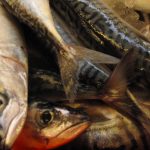The Scottish Aquaculture Research Forum (SARF), in association with Marks and Spencer, has commissioned new research to look at the potential to use seaweed (macroalgae) and other microscopic algae as commercially viable sources of raw materials to feed fish.
It is fact that almost 50 percent of seafood consumed now comes from aquaculture of which 6 percent is marine fish farming. The effect of world population growth combined with our increasing consumption of seafood means that the demand for seafood can only be met by aquaculture production. As a matter of fact different types of farmed fish are fed on formulated diets to ensure they remain healthy and grow at an optimal rate. However, a proportion of these diets rely on raw materials from capture fisheries.
There is increasing interest worldwide in growing micro and macro algae for a variety of purposes – including biofuels, bioplastics, pharmaceuticals and as raw materials for formulated diets. With its extensive coastline, well established marine research capacity and progressive approach to renewable energy development, Scotland is at the forefront of this activity, with a growing body of research expertise as well as commercial and political interest.
Mark James, from SARF, said that the use of seaweeds and other algae could help to reduce reliance on traditional sources of raw materials for aquaculture diets. He added that this project will hopefully provide an objective view on the viability of algae as a raw material source for aquaculture feeds.
Richard Luney, Wild Fish and Aquaculture Manager from Marks and Spencer said that as part of Plan A environmental and ecological initiatives we have committed to sourcing all of our aquaculture species and feeds from the most sustainable sources by 2015. Dr Piers Hart, Aquaculture Policy Officer for WWF Scotland, who was involved in developing the specification for the review, commented that WWF welcomes this new approach to help address one of the key challenges for the future of the fish farming industry.








